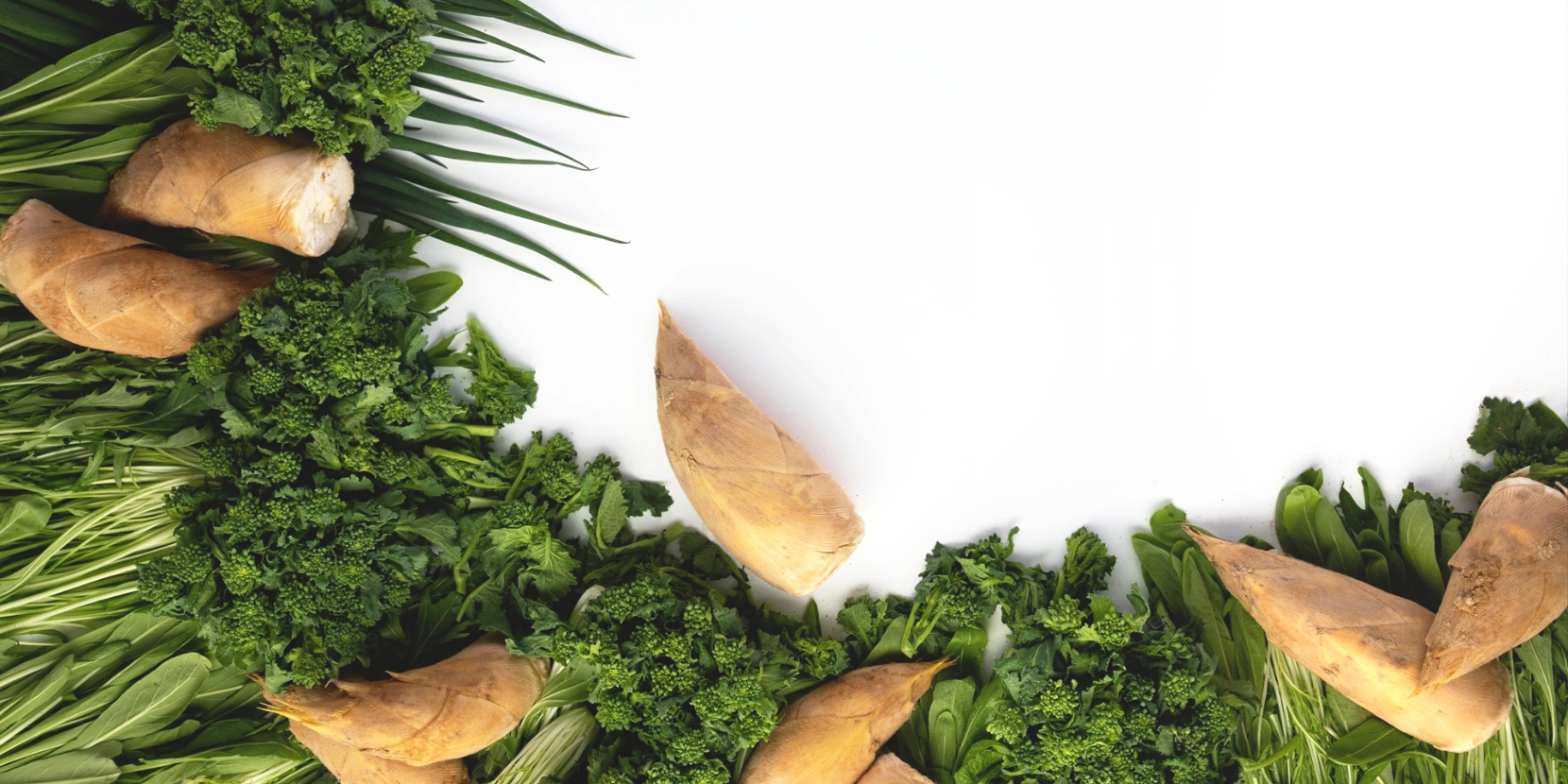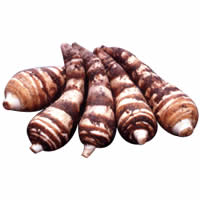京都府の農業

京のブランド産品
えびいも Ebi-Imo (Shrimp-shaped taro) 海老芋

えびいもは、里芋の一種で、品種ではなく栽培方法の違いにより作り出されるものです。 安永年間(1772~81)、現在の「いもぼう」の祖先・平野権太夫が、青蓮院宮が長崎から持ち帰った里芋の種を、土入れをして丁寧に育てているうち、皮に縞がある大きなえびのような形をした芋が採れるようになり、「えびいも」と名付けられたとか。 肉質が緻密で煮込んでも形が崩れないのが特徴のえびいもは、数ある伝統野菜の中でも最高のうま味を持つものの一つと言えます。棒だらと一緒に煮た「いもぼう」は、京都の料理店の名前だけでなく、古くから京都の代表的なおばんざいとして、各家庭で親しまれてきた京の逸品です。
Ebi-Imo is a type of taro, produced through a different cultivation method. During An’ei, the ancestor of today’s “Imobou” (name of restaurant), Hirano Gondayu planted the taro seeds, brought back by Shorenin from Nagasaki, enabling the cultivation of the shrimp-shaped taro, called Ebi (shrimp)-Imo (taro). The striped creases found on the skin resembles a shrimp. It is one of the best tasting vegetable among a number traditional vegetables, characterized by the density of the root plant, and its shape not easily broken even when cooked. The famous “Imobou” dish, cooked with Cod fish is not only the name of Kyoto’s restaurant. It represents one of the “Obanzai” (Traditional Kyoto-style dish) dishes and has been popular in many homes since the old days.
海老芋是芋頭的一種。是一種透栽培方法的不同才生產出的種類,並不是因為一開始品種就不同。於安永年間(西元1772~1781),由現在「芋棒(芋頭鱈魚干)」的祖先・平野權太夫,將自長崎所帶回來的芋頭種子,放入青蓮院宮院內土壤中細心照顧之際,因其外皮呈現出條紋如大蝦般的紋路,故有了「海老芋(日文中海老為蝦子之意。)」之稱。特徵是肉質緊緻綿密,即便經過燉煮調理其形狀也能保持完整,據說是稀少的傳統蔬菜中,擁有最佳美味的蔬菜之一。能與鱈魚干一同煮成「芋棒(芋頭鱈魚干)」,這除了是京都料亭的店名之外,也是自古以來代表京都的傳統小菜,是各個家庭都很熟悉的一道京都佳餚。
